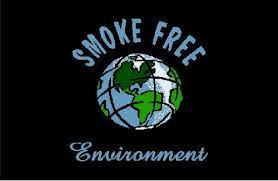03 Aug 2022 Smoke free environment

- To fulfill its plan to be smoke-free by the year 2025, New Zealand’s parliament recently introduced the Smoke-Free Environment and Regulated Products (Smoked Tobacco) Amendment Bill.
- Following New Zealand, Malaysia is also considering banning the sale of all tobacco products, including smoking and e-cigarettes, to people born after 2007.
New Zealand Bill on Tobacco Endgame:
- ‘Tobacco endgame’ refers to a policy approach that focuses on ending tobacco-related disease with the aim of a ‘tobacco-free future’.
- The bill calls for three strategies to significantly reduce or eliminate smoking.
- If the bill is implemented, it will be the first law in the world to prevent the next generation from buying cigarettes legally.
Proposed Strategies:
- Significantly reduce the amount of nicotine (known as “denicotinization” or “very low nicotine cigarettes – VLNC”) in tobacco so as not to become addictive.
- 90% to 95% reduction in the number of shops selling tobacco.
- Making it illegal (thus the “smoke-free generation”) to sell tobacco to people born on or after January 1, 2009.
Current status of tobacco use:
Global:
- The tobacco epidemic is one of the world’s largest public health threats to date, killing more than 8 million people every year (according to the World Health Organization), including indirectly (due to cigarette smoke, etc.). ) including the 1.2 million deaths affected.
- One in four people around the world use tobacco.
- All forms of tobacco are harmful, and there is no safe level of exposure to tobacco.
- Cigarette smoking is the most common form of tobacco use worldwide.
- Other tobacco products include waterpipe tobacco, various smokeless tobacco products, cigars, cigarillos, roll-your-own tobacco, pipe tobacco, bidis and kreteks.
- Tobacco use is a major risk factor for many chronic diseases, including cancer, lung disease, heart disease and stroke.
Location in India:
- According to the National Family Health Survey-5 (Year 2019-21), 38% of men and 9% of women above the age of 15 use tobacco products.
- Women (19%) and men (51%) belonging to Scheduled Tribes are more likely to use tobacco than those belonging to any other caste/tribe group.
- Among men as well as women, tobacco consumption is higher in rural areas (43 percent for men and 11 percent for women) than in urban areas.
- About three out of five men and 15% of women with no schooling or with less than 5 years of schooling use tobacco.
Socio-economic Burden of Tobacco Consumption:
- Due to the use of tobacco, people do not spend on basic necessities like household expenses, food and shelter, but on tobacco, which increases poverty.
- The economic cost of tobacco use is substantial and includes the health care costs necessary to treat diseases caused by tobacco use, as well as the loss of human capital resulting from tobacco morbidity and mortality.
- It is one of the leading causes of death and disease in India and causes about 1.35 million deaths every year.
- India is also the second largest consumer and producer of tobacco. Various types of tobacco products are available in the country at very low prices.
- The total economic cost attributable to tobacco use (for persons aged 35 years and above from all diseases in India in the year 2017-18) was Rs 177,341 crore.
Measures to tackle high tobacco consumption:
Global Initiatives:
WHO Framework Convention on Tobacco Control:
- It was developed for the global prevention of the tobacco epidemic and is an evidence-based treaty that reaffirms the right of all people to the highest level of health.
- India has adopted tobacco control provisions under this framework of WHO FCTC.
World No Tobacco Day:
- Every year 31 May is observed as ‘World No Tobacco Day’ to spread awareness about the harmful effects of tobacco use.
Initiatives taken by India:
Cigarettes and Other Tobacco Products Act (COTPA), 2003:
- It replaced the Cigarettes Act (Production, Supply and Distribution Regulation) of 1975 (largely limited to statutory warnings – ‘cigarette smoking is injurious to health’) to be displayed on cigarette packs and advertisements.
- The 2003 Act also covered cigars, bidis, cherut (cylindrical cigars without filter), pipe tobacco, hookah, chewing tobacco, pan masala and gutkha.
E-Cigarette Prohibition Ordinance, 2019:
- It prohibits the production, manufacture, import, export, transport, sale, distribution, storage and advertisement of e-cigarettes.
National Tobacco Quitline Services (NTQLS):
- The National Tobacco Quitline Services is able to reach a large number of tobacco users, with the sole purpose of providing telephone-based information, advice, support and counseling services to those wishing to quit tobacco.
mCessation Programme:
- This program is an initiative based on mobile technology to quit tobacco.
- India launched this program in 2016 using text messages as part of the government’s Digital India initiative.


No Comments